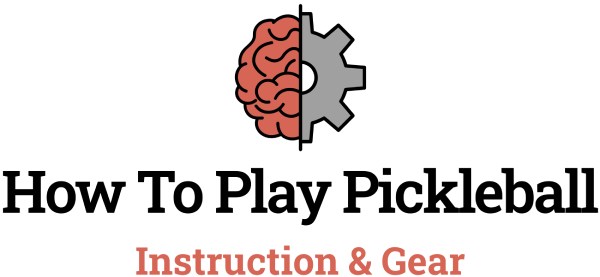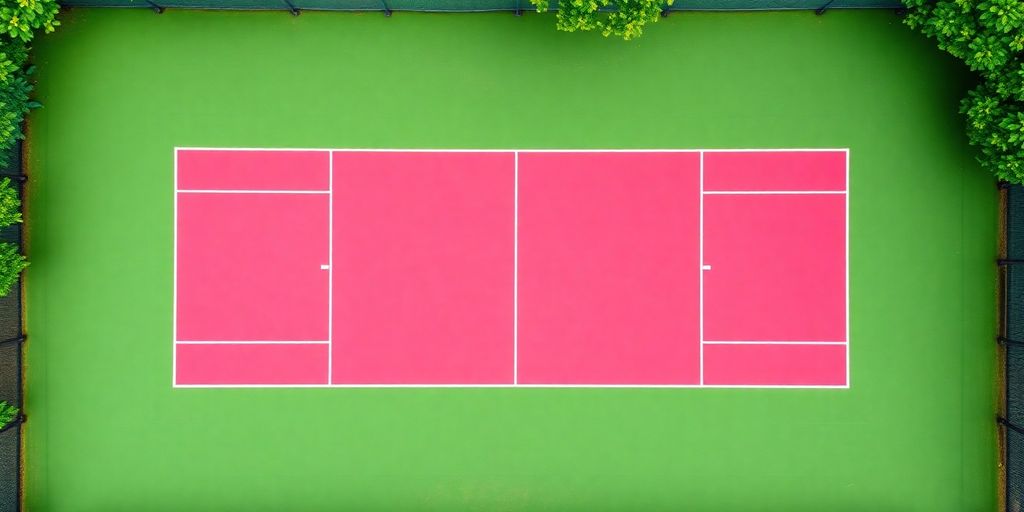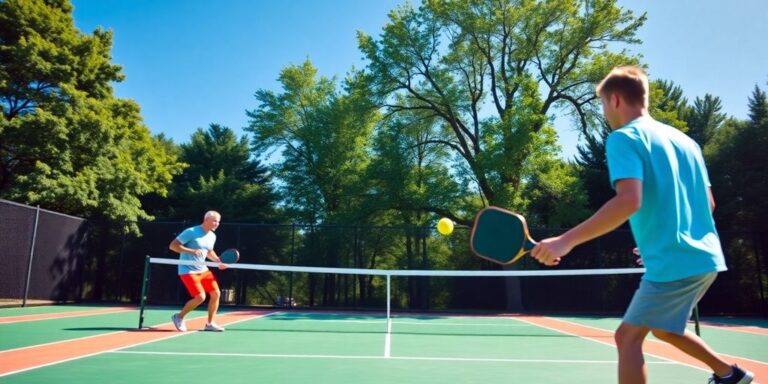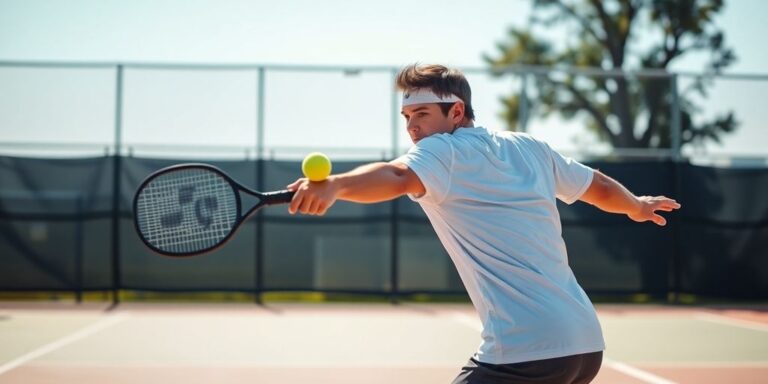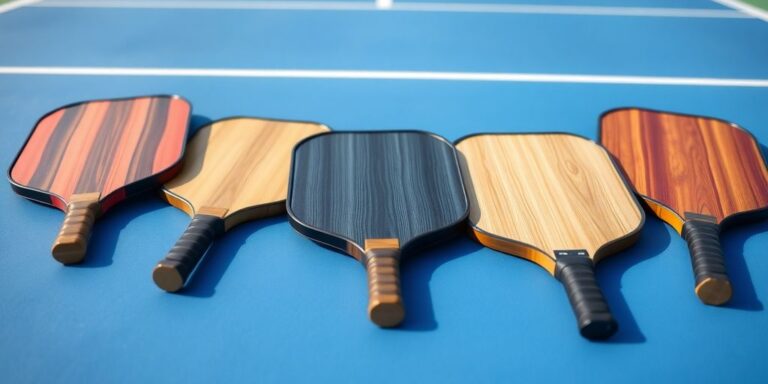Pickleball is growing fast, and understanding the court’s dimensions is key to enjoying the game. Whether you’re playing in your backyard or a local gym, knowing the size and layout can help you play better and have more fun. This guide will break down everything about pickleball court dimensions, so you can set up your court right and play with confidence.
Key Takeaways
- A standard pickleball court is 20 feet wide and 44 feet long, the same for both singles and doubles play.
- The non-volley zone, or “kitchen,” is a 7-foot area on each side of the net where volleys are not allowed.
- Service zones are crucial for strategy, measuring 10 feet deep and affecting how serves are played.
- Baselines and sidelines mark the boundaries, making shot accuracy important for staying in play.
- Pickleball courts are smaller than tennis courts but similar in size to badminton courts, making them versatile for different spaces.
The Basics of Pickleball Court Dimensions
Understanding the Standard Court Size
Pickleball courts are quite compact compared to other sports, measuring just 20 feet wide and 44 feet long. This small size keeps the game fast-paced and exciting, much like badminton courts. A pickleball court is a perfect blend of simplicity and functionality, designed to keep players close to the action. Unlike tennis, where the court dimensions change for singles and doubles, pickleball maintains the same size for both styles of play. This consistency makes it easier to set up courts in various locations, whether it’s in a sports complex or a backyard.
Differences Between Indoor and Outdoor Courts
While the dimensions of pickleball courts remain the same whether indoors or outdoors, the surface can vary. Indoor courts often have smoother surfaces, like wood or synthetic materials, which can affect the bounce of the ball. Outdoor courts, on the other hand, might be asphalt or concrete, which can be rougher. Additionally, outdoor play might be influenced by weather conditions, such as wind or rain, which can add an extra layer of challenge to the game.
Why Court Dimensions Matter
Understanding the layout and size of the court is crucial for developing effective strategies and positioning during gameplay. With the court being smaller than a tennis court, players need to be more agile and quick on their feet. The court’s dimensions also dictate the style of play, encouraging more volleys and quick exchanges. Knowing these dimensions can help players anticipate where the ball might go and position themselves accordingly, turning the game into a strategic dance of skill and anticipation.
Exploring the Non-Volley Zone
What is the Non-Volley Zone?
In pickleball, the non-volley zone, or "the kitchen," is a critical area that stretches 7 feet from either side of the net. This space is unique because players are not allowed to volley the ball while standing within it. This rule is vital because it keeps players from dominating the game with aggressive net play, encouraging more strategic and thoughtful exchanges.
Rules Governing the Kitchen
Navigating the kitchen requires an understanding of specific rules:
- Players can only step into the kitchen after the ball has bounced.
- Volleying in the kitchen results in a fault, which can change the momentum of a game.
- The kitchen rule promotes balanced play, making it essential to plan your moves carefully.
The kitchen’s role is pivotal in keeping games competitive and exciting, as it forces players to balance their offensive and defensive strategies.
Strategies for Playing Near the Net
Mastering play near the kitchen involves a mix of tactics:
- Dink Shots: Use soft, controlled shots to force your opponent into errors.
- Positioning: Stay alert and ready to move quickly in and out of the kitchen.
- Timing: Perfect your timing to approach the net without stepping into the kitchen prematurely.
Understanding these strategies can give you an edge, allowing you to control the pace and flow of the game. The kitchen may seem like a small part of the court, but its impact on the game is substantial.
Service Areas and Their Impact on Gameplay
Dimensions of the Service Zones
In pickleball, the court is divided into two service zones on each side of the net. Each service zone is 10 feet deep, stretching from the net to the baseline. This specific layout requires players to deliver precise serves that land diagonally across the court into the opponent’s service zone. Mastering the serve is crucial, as it sets the tone for the rally and can dictate the flow of the game.
How Service Zones Affect Strategy
The service zones are not just lines on the court; they influence gameplay significantly. Players must aim accurately to ensure the serve lands within the designated area. This means balancing power and precision, which can be a game-changer. The placement of a serve can exploit an opponent’s weaknesses, forcing them into a defensive position right from the start.
- Accurate Serves: Landing the ball in the right spot can keep your opponent on their toes.
- Strategic Angles: Use the angles of the service zones to your advantage to create challenging returns.
- Deceptive Serves: Varying the speed and spin can surprise opponents, making it harder for them to predict your next move.
Mastering Serves in Pickleball
To become proficient at serving, practice is key. Here are some tips to improve your serving skills:
- Focus on Technique: Ensure your stance and swing are consistent.
- Vary Your Serves: Mix up your serves to keep opponents guessing.
- Practice Under Pressure: Simulate game conditions to get used to serving in high-stakes situations.
The serve is not just an initiation of play; it’s an opportunity to gain a tactical edge over your opponent. A well-placed serve can set the stage for a successful rally, giving you control over the point.
Understanding the importance of the service zones can elevate your game, turning the serve into a strategic weapon rather than just a routine start to the rally.
The Role of Baselines and Sidelines
Understanding Court Boundaries
In pickleball, the baselines and sidelines define the outer limits of the court. The baselines stretch across the back of the court, each measuring 20 feet in width. Meanwhile, the sidelines run the length of the court, measuring 44 feet. These lines are crucial for determining whether a ball is in or out of play. Any shot landing outside these boundaries is considered out, impacting the score and flow of the game.
Players need to be aware of these boundaries to avoid faults. Stepping on or over the baseline while serving, for instance, results in a foot fault. This awareness helps players refine their positioning and shot placement, ensuring they play within the rules and maintain control over the game.
How to Use Sidelines to Your Advantage
Sidelines are not just boundaries; they’re strategic tools. By positioning yourself closer to the sidelines, you can create sharper angles for your shots, making it harder for opponents to predict and return the ball. Here are some tips to use sidelines effectively:
- Widen Your Shots: Hitting close to the sidelines can stretch your opponent’s defense, opening up the court for your next move.
- Control the Angles: Use the sidelines to change the direction of play, forcing your opponent to move more and potentially make errors.
- Practice Precision: Regularly practice aiming for the sidelines to improve accuracy and confidence during matches.
The Importance of Baseline Positioning
Positioning near the baseline can significantly influence your gameplay. Staying close to the baseline allows you to react quickly to deep shots from your opponent. Here’s why baseline positioning matters:
- React to Deep Shots: Being near the baseline gives you more time to respond to long shots, especially those aimed at your feet.
- Maintain Offensive Pressure: From the baseline, you can hit powerful groundstrokes, keeping your opponent on the defensive.
- Set Up for Volleys: By controlling the baseline, you can move forward to the net for volleys, maintaining an aggressive play style.
Understanding the role of baselines and sidelines in pickleball is essential for developing a strategic game plan. These lines are not just limits; they are tools that can be used to enhance your play, keep your opponent on their toes, and ultimately, control the game.
Comparing Pickleball Court Dimensions to Other Sports

Pickleball vs. Tennis Court Sizes
Pickleball courts are a lot smaller than tennis courts. A standard pickleball court measures 20 feet by 44 feet, which is about a quarter of the size of a tennis court. Tennis courts are 78 feet long and 27 feet wide for singles matches, and they expand to 36 feet wide for doubles. The compact size of pickleball courts means less running, keeping the game fast-paced and energetic. This smaller size also allows for more courts to fit in a single area, making it perfect for community centers or parks where space might be tight.
Similarities with Badminton Courts
Interestingly, pickleball and badminton share similar court dimensions. Both sports have courts that measure 20 feet by 44 feet. However, the games themselves are quite different. Badminton courts are designed for a game played with a shuttlecock, requiring a different surface and net height. The shared size makes it easier to convert badminton courts into pickleball courts, which is a common practice in multi-use sports facilities.
Why Pickleball Courts are Unique
What makes pickleball courts unique isn’t just their size but also their layout. The court includes a non-volley zone, affectionately known as "the kitchen," which adds a strategic layer to the game. Players must be mindful of this area, as volleys are prohibited there. This feature, along with the standardized court dimensions, ensures that pickleball remains a distinct and engaging sport, offering a mix of speed, strategy, and skill that sets it apart from other racket sports.
Building Your Own Pickleball Court

Space Requirements for a Regulation Court
Before diving into construction, it’s essential to understand the space you’ll need. A standard pickleball court measures 20 feet by 44 feet, but you’ll want a bit more room around it for safety and comfort. Ideally, aim for a total area of 34 feet by 64 feet. This extra space lets players chase those tricky shots without crashing into anything.
Step-by-Step Guide to Court Layout
Creating your own pickleball court can be a rewarding project. Follow these steps to ensure you get it right:
- Site Assessment and Planning: Begin with a thorough site assessment to ensure the area is suitable for a pickleball court. Consider factors like ground level, drainage, and sun exposure.
- Mark the Court Dimensions: Start by marking out the 20-foot by 44-foot court using chalk or string. Ensure the lines are straight and corners are square.
- Establish the Boundaries: Use a carpenter’s square to make sure your corners are right angles. Then, mark the outer boundaries with tape or paint.
- Set Up the Net Posts: Measure 22 feet from each baseline to place the net posts. The net should be 36 inches high at the sides and 34 inches in the center.
- Mark the Non-Volley Zone: Also known as the "kitchen," this area is 7 feet from the net on both sides. Mark it clearly to avoid confusion during play.
- Create the Service Areas: Divide the space between the baseline and the kitchen into two equal rectangles to form the service boxes.
- Final Touches: Double-check all measurements and make any necessary adjustments. Once everything’s in place, secure the lines with permanent paint or tape.
Common Mistakes to Avoid
Building a pickleball court isn’t without its challenges. Here are some pitfalls to watch out for:
- Improper Orientation: Position your court north-south to minimize sun interference during play.
- Ignoring Noise Concerns: Check local regulations and talk to neighbors about potential noise issues.
- Neglecting Surface Preparation: Ensure the ground is level and free of debris before starting the layout.
Building your own pickleball court is a fantastic way to enjoy the game right at home. With careful planning and attention to detail, you’ll have a court that meets regulation standards and provides endless fun.
Maintaining Your Pickleball Court
Importance of Regular Maintenance
Keeping your pickleball court in tip-top shape isn’t just about looks—it’s about safety and playability. Regular maintenance helps prevent injuries and prolongs the life of your court. Here’s what you should focus on:
- Inspect for Damage: Regularly walk the court to check for cracks, uneven surfaces, and other potential hazards. Early detection can save you from costly repairs.
- Clean the Surface: Sweep away leaves, dirt, and debris. A clean court reduces slip hazards and keeps the game flowing smoothly.
- Paint and Lines: Keep the boundary lines clear and visible. Faded lines can lead to disputes during play, so a fresh coat of paint is essential.
A well-maintained court not only ensures fair play but also enhances the overall playing experience.
How to Keep Court Markings Clear
Court markings are crucial for gameplay. Here’s how to keep them in top condition:
- Regular Repainting: Depending on usage, you might need to repaint lines every 1-2 years.
- Use Quality Paint: Invest in high-quality, weather-resistant paint to withstand the elements.
- Periodic Checks: Regularly check for fading or chipping and touch up as necessary.
Tips for Outdoor Court Care
Outdoor courts face unique challenges from the weather. Here are some tips to keep them in great shape:
- Weather Protection: Consider using a sealant to protect the surface from rain and sun damage.
- Non-Slip Surface: Ensure the court is made from or treated with non-slip materials to prevent accidents.
- Regular Inspections: After storms or extreme weather, inspect the court for any damage or debris.
Maintaining your pickleball court doesn’t have to be a chore. With a little regular attention, you can ensure a safe and enjoyable environment for all players. Plus, it keeps the game fun and fair for everyone involved.
Keeping your pickleball court in great shape is essential for a fun game. Regular maintenance like cleaning the surface and checking the nets can make a big difference. Want to learn more about how to care for your court? Visit our website for tips and tricks!
Wrapping It Up: Your Pickleball Court Journey
So, there you have it! We’ve covered all the nitty-gritty details about pickleball court dimensions. Whether you’re planning to set up a court in your backyard or just curious about the game, knowing these measurements can really help. It’s not just about the numbers; it’s about understanding how the space affects play. With the right setup, you can enjoy pickleball anywhere, from a local park to a repurposed tennis court. So grab your paddle, find a court, and get playing. Who knows, you might just discover your new favorite hobby!
Frequently Asked Questions
What are the official dimensions of a pickleball court?
A pickleball court measures 20 feet wide and 44 feet long, suitable for both singles and doubles play.
How does the non-volley zone work in pickleball?
The non-volley zone, also known as the kitchen, is a 7-foot area near the net where players cannot hit the ball in the air.
Can I play pickleball on a tennis court?
Yes, you can play pickleball on a tennis court by adjusting the net height and marking the pickleball court dimensions.
What is the recommended space around a pickleball court?
The recommended space around a pickleball court is at least 10 feet on each end and 5 feet on each side for safe play.
How high is a pickleball net?
A pickleball net is 36 inches high at the sidelines and 34 inches at the center.
What materials are best for outdoor pickleball courts?
Concrete and asphalt are the most common materials for outdoor pickleball courts due to their durability.
